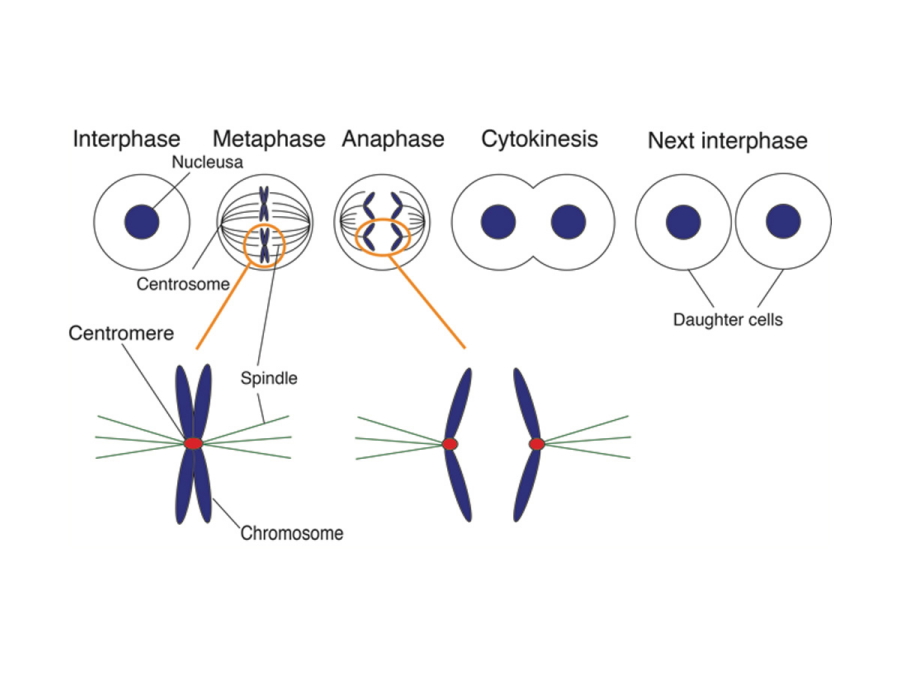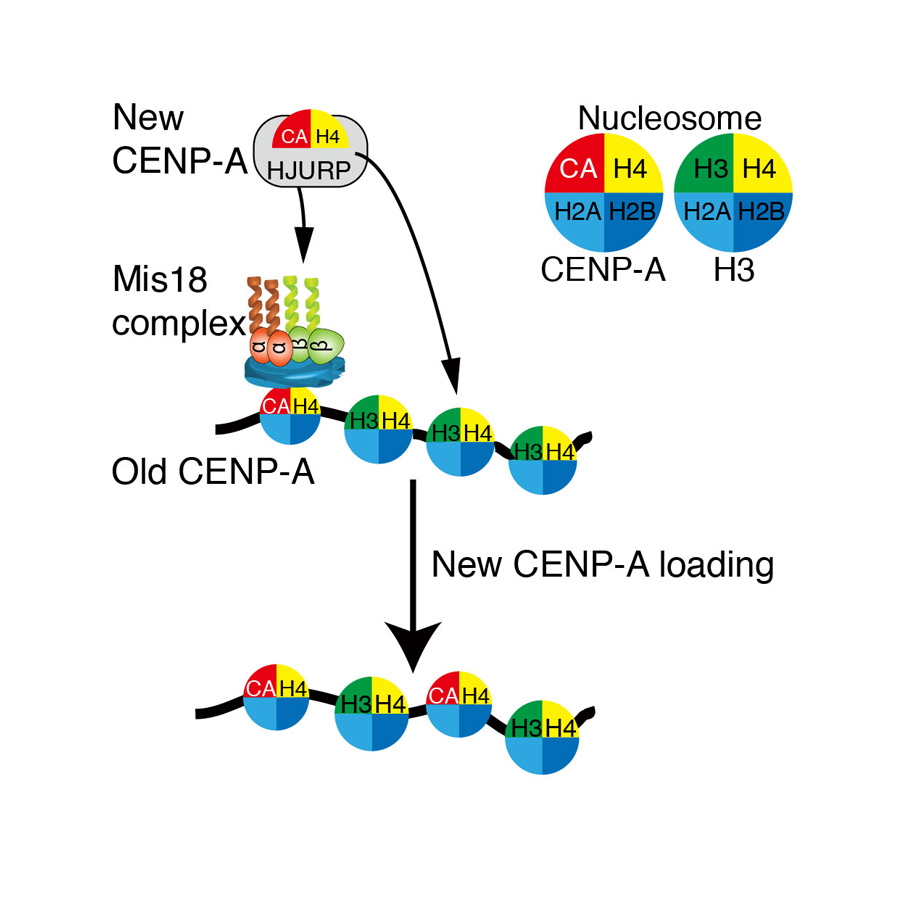Association of M18BP1/KNL2 with CENP-A nucleosome is essential for centromere formation in non-mammalian vertebrates
| Journal | Dev Cell 42, 181–189 (2017) |
|---|---|
| Title | Association of M18BP1/KNL2 with CENP-A nucleosome is essential for centromere formation in non-mammalian vertebrates |
| Laboratory | Laboratory of Chromosome Biology〈Prof. FUKAGAWA Tatsuo〉 |
Abstract
Centromere is essential for faithful chromosome segregation. The mechanism of centromere formation remains unclear. Fukagawa and his colleagues demonstrate that M18BP1/KNL2, a member of the Mis18 complex, associates with CENP-A nucleosome in non-mammalian vertebrates and that this association is essential for centromere formation. This explains how new CENP-A recognizes the centromere position and centromeres are formed and maintained.

Figure1: Chromosome segregation during mitosis.
Chromosomes contains all genome information. During mitoisis spindles attach a special structure of chromosome, which is called "centromere". In this study, we clarified how centromeres are formed on chromosomes.

Figure2: Summary of this work.
The Mis18 complex including KNL2/M18BP1 associates with CENP-A nucleosomes (Old CENP-A) in centromeres. Pre-deposit CENP-A with H4 and HJURP (New CENP-A) recognizes the Mis18 complex on centromeres. Then, new CENP-A is correctly deposited into centromeres (CENP-A loading). This process explains how CENP-A is correctly deposited into centromeres.
| Authors | Tetsuya Hori (1), Wei-Hao Shang (1), Masatoshi Hara (1), Mariko Ariyoshi (1), Yasuhiro Arimura (2), Risa Fujita (2), Hitoshi Kurumizaka (2), Tatsuo Fukagawa (1)
|
|---|---|
| PubMed | 28743004 |
